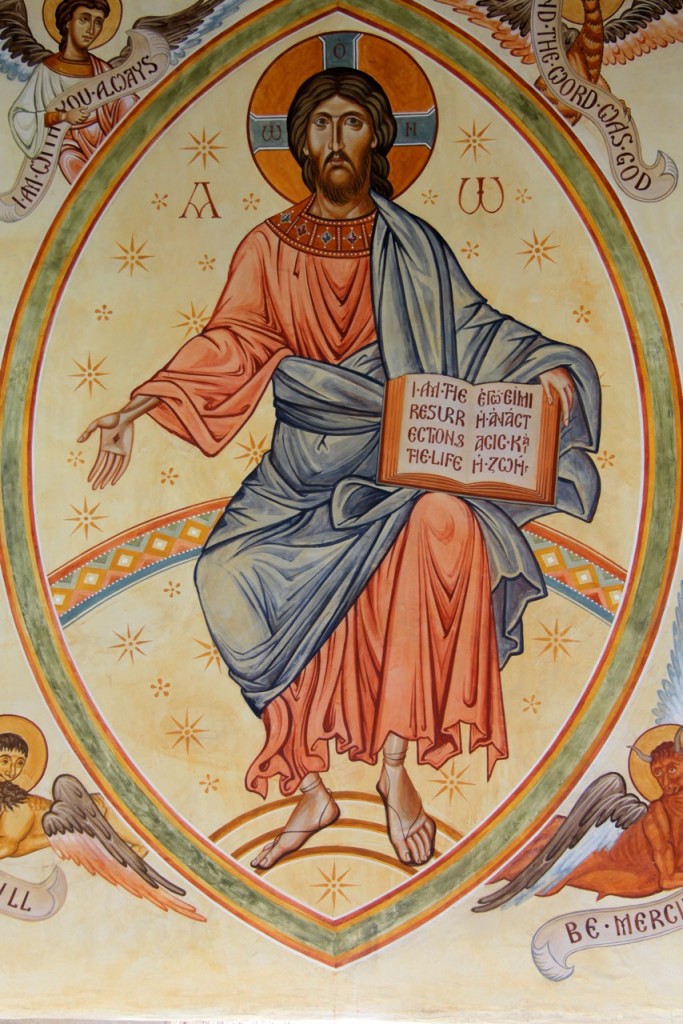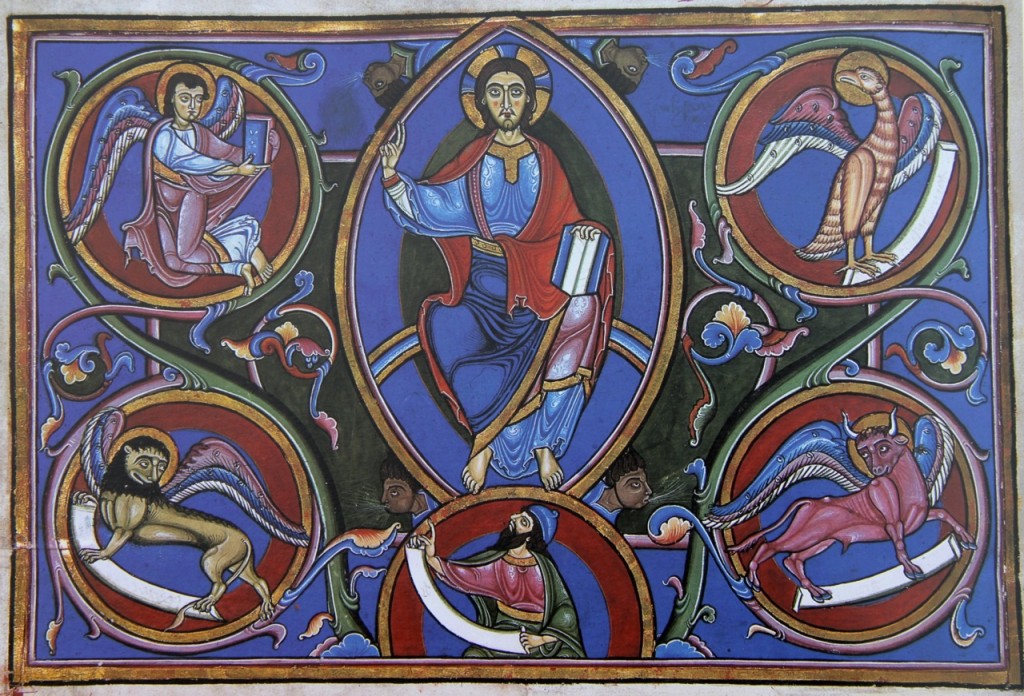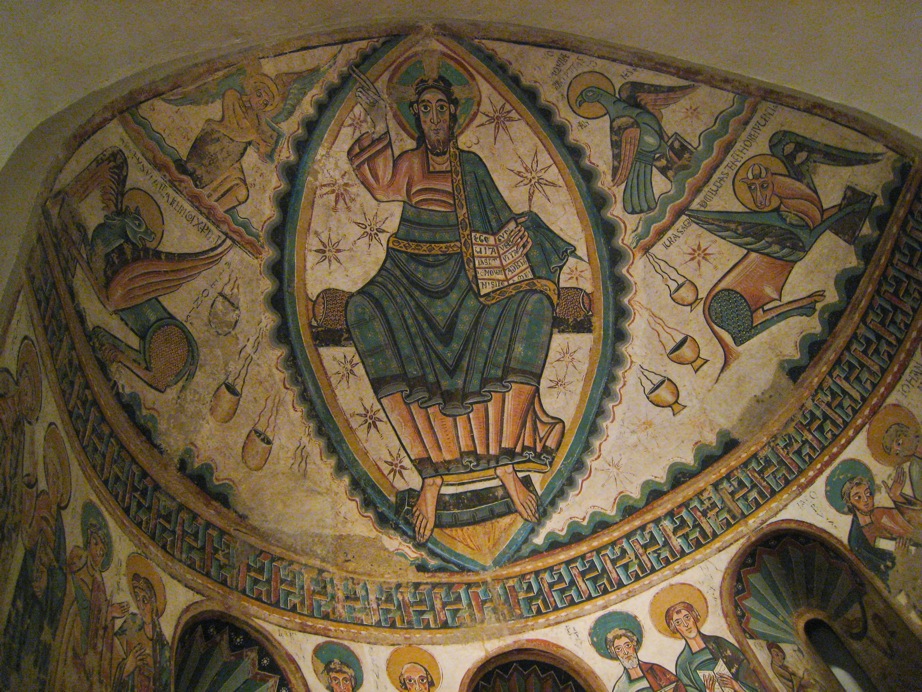Christ the Pantocrator

In August Aidan Hart completed a wall painting on the east wall of the church. On some of the other walls there already exist simple medieval wall paintings, dating from around 1380 A.D., but the east wall was newly plastered during recent restoration work and was therefore free for a new painting.
The image depicts Christ in glory, flanked by two six winged cherubim and surrounded by the four living creatures who represent the four Evangelists. The Biblical inspiration for such depictions are the visions recorded in Isaiah 6:1-7, Ezekiel 1:4-12, and Revelation 4:6-8.
Stylistically the secco is a union of Romanesque and Byzantine influences. The overall scheme of Christ in a mandorla with the four living creatures is a theme commonly depicted in Romanesque wall paintings in France and Spain. Aidan adapted the four living creatures from the Bury St Edmunds Bible (created about 1135 A.D.), and Christ’s tunic from the stained glass windows in Canterbury Cathedral (1180-1207 A.D.).
The painting measures 6 metres by 3 metres (10 feet x 20 feet), and was begun as fresco (that is, on wet lime plaster) and completed in secco (on dry plaster). The medium used in both the fresco and secco phases was egg yolk and limewater. Recent analysis has shown that this was the technique and medium used in the famous paintings by Manuel Panselinos in the Protaton church, Mount Athos.
In a simple rectangular church with a hipped roof such as ours, the focal point is the east wall. There are no appropriate places to depict Christ in the ceiling, and this is why on the east wall in such “basilican” churches the central figure is usually Christ rather than the Mother of God.



Roundels
The next phase in the wall paintings in the church consists painting roundels of saints along the top of the north and south walls
They are to be painted on a band of existing lime plaster approximately 1.3 high, applied during restoration work in 1994. There would be nine roundels on each side, each about 60cmin diameter. They would contain busts of saints both from Britain from a variety of other countries.
The proposed new wall paintings on the upper north and south walls would greatly enrich our wonderful church, both because it was originally completely covered in paintings, and because such images and other icons are an integral part of Orthodox worship. We already have an icon screen with original icons, numerous other panel icons around the walls, and the recent east wall gable fresco. These new roundels on the north and south wall would greatly compliment and integrate what already exists.
The proposed designs include nine female saints to be located on the north wall and nine male saints on the south. The parish itself is multi-cultural, and the choice of saints, selected by the congregation, reflects this. As well as the British saints Chad, Oswald, Cuthbert and Werburgh they include others such as John of Damascus, Luke of Simferopol in Crimea, and Constantine the Great.
In order to harmonize with the existing east wall and the medieval paintings, the style of painting would be of the same order as the Romanesque inspired east wall gable painting, and the colour choice would be gentle, and made of earth pigments.
Due to the need for extensive wetting before plastering, the fresco technique would not be used in this instance in order to avoid any damage to the medieval paintings below. Secco would therefore be used. Aidan would use either a traditional casein and egg medium with pigments, or a mineral silicate medium, such as Keims. Water silicate is known for its high breathability, durability, matt finish and, like casein, gentle tones when used with earth pigments.



